Although remnants of human activity have been found on the southern slopes of Ithome Mountain dating back to the 3rd millennium BCE, the first settlement here was established in the 9th-8th centuries BCE. At the same time, a sanctuary dedicated to Zeus was built at the top of the mountain, with ruins located just some hundred metres from the old Voulcanou Monastery that I mentioned in the earlier sequel of the stories from my travels in the Peloponnese (and southern Greece) in September 2023.
From the 8th to the 5th century, Ithome, the ancient name for Messene, was in constant conflict with the dominant Sparta. However, everything changed after 371 BCE when the Spartans were defeated in the Battle of Leuctra by the Thebans. The Theban general Epaminondas founded the new city of Ancient Messene here in 369 BCE and named it after the mythical queen Messenia. I have also discussed the foundations of this city in the previous part of my travel narrative.
Today, within the Archaeological Site of Ancient Messene, you can see the well-preserved remains of both secular and sacral buildings, many of which have been significantly reconstructed, adding to the site's unique charm.
 Archaeological site of Ancient Messene
Archaeological site of Ancient Messene
I continued my tour by heading to one of the reconstructed monumental structures, which is the Theatre.
 Theatre in Ancient Messene
Theatre in Ancient Messene
The impressive size of this theatre speaks of the economic power of the ancient city. In Ancient Greece, theatres were not only used for entertainment and performances, but they also hosted political gatherings. The theatre continued to be expanded until the 4th century CE.
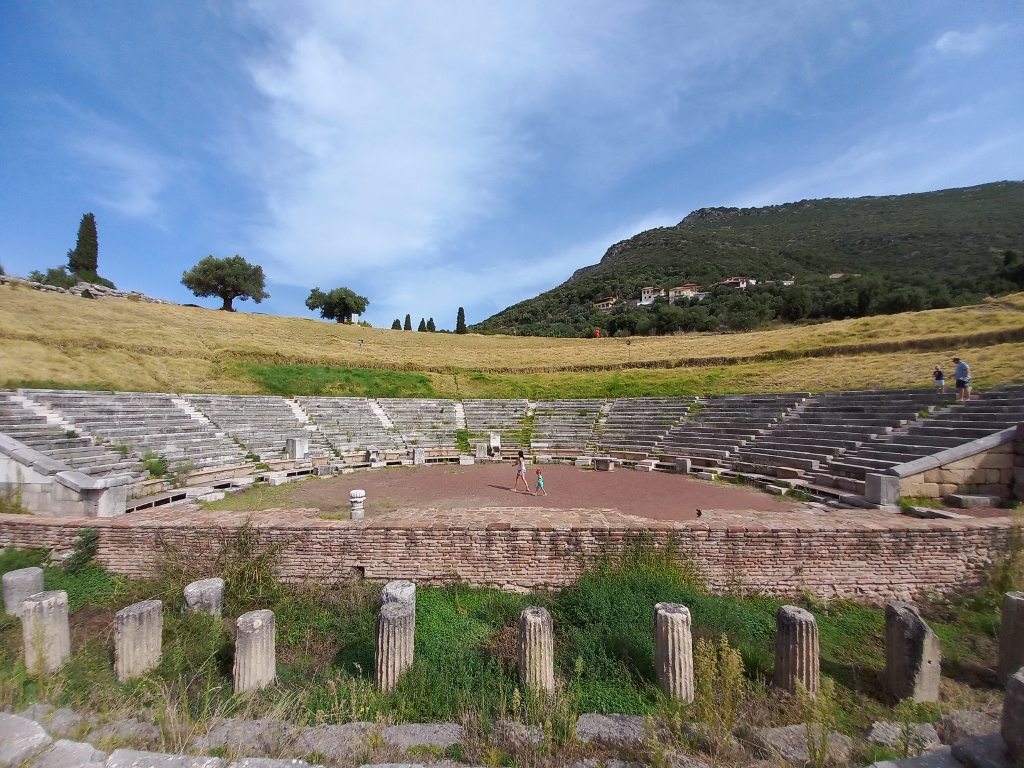 Theatre in Ancient Messene
Theatre in Ancient Messene
I took a stroll here, admiring the details, and I also managed to take a proper photo of myself.
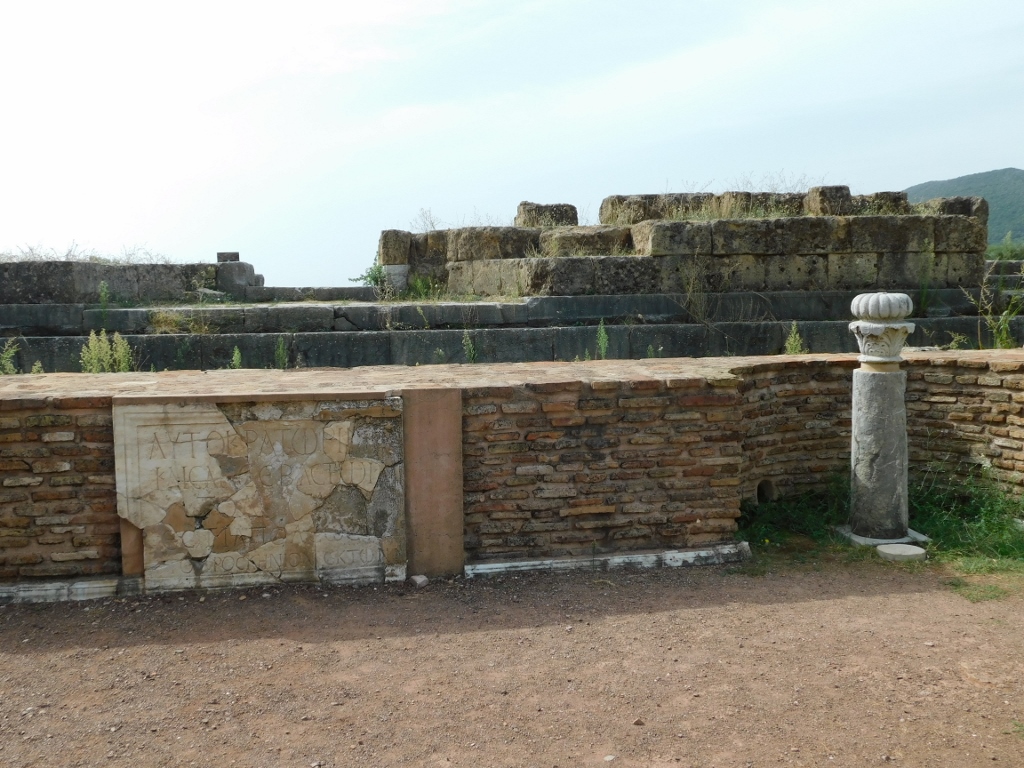 Theatre in Ancient Messene, a detail
Theatre in Ancient Messene, a detail
 Self-portrait at the Theatre in Ancient Messene
Self-portrait at the Theatre in Ancient Messene
South of the theatre there are the remains of a sanctuary dedicated to the Egyptian goddess Isis. Covering an area of 1,600 sq. m, the structure was truly massive. It's not surprising that a sanctuary was built for an ancient Egyptian goddess in Greece; from the time of Alexander the Great, there was significant cultural exchange, leading sailors and traders to introduce gradually new beliefs to the region.
 Sanctuary of Isis in Ancient Messene
Sanctuary of Isis in Ancient Messene
This blend of different influences, cultures and religions continued over time. Just nearby, you can see the remains of a Byzantine church from the 7th century CE. It is a three-aisled basilica (16 x 38 m) constructed entirely from materials found in the surrounding area.
 Basilica in Ancient Messene
Basilica in Ancient Messene
Directly in continuation are the remains of a circular temple, a tholos, dedicated to Aphrodite.
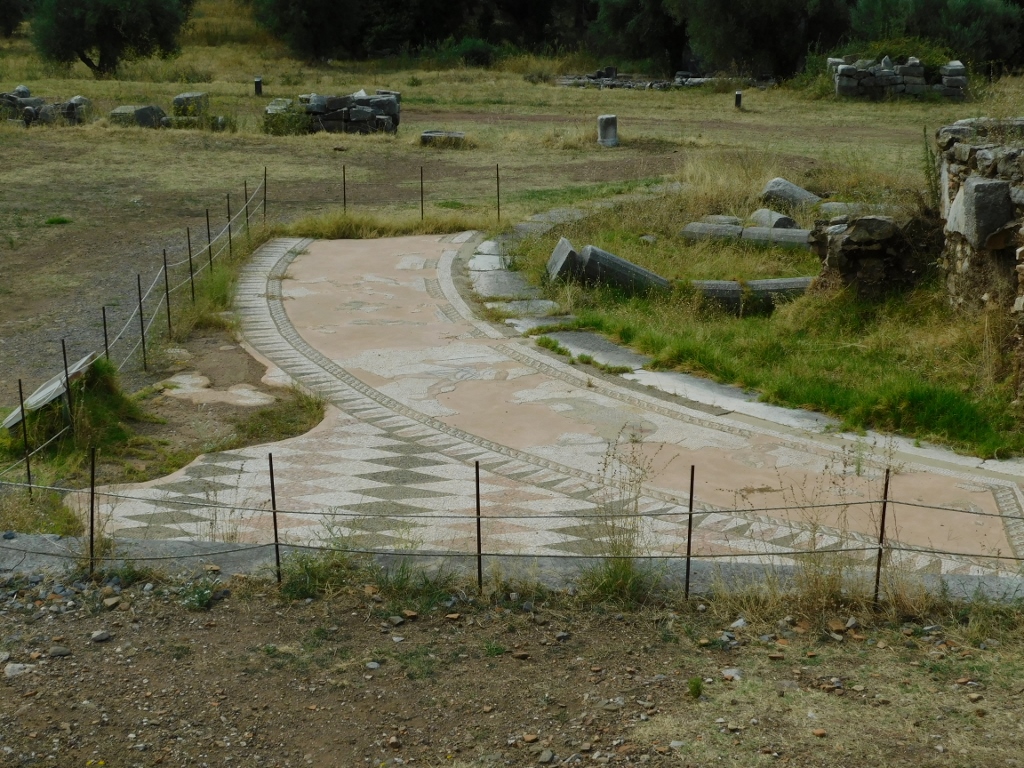 Temple of Aphrodite in Ancient Messene
Temple of Aphrodite in Ancient Messene
The beautiful floor mosaics stand out, including a depiction of the mythical queen Messenia.
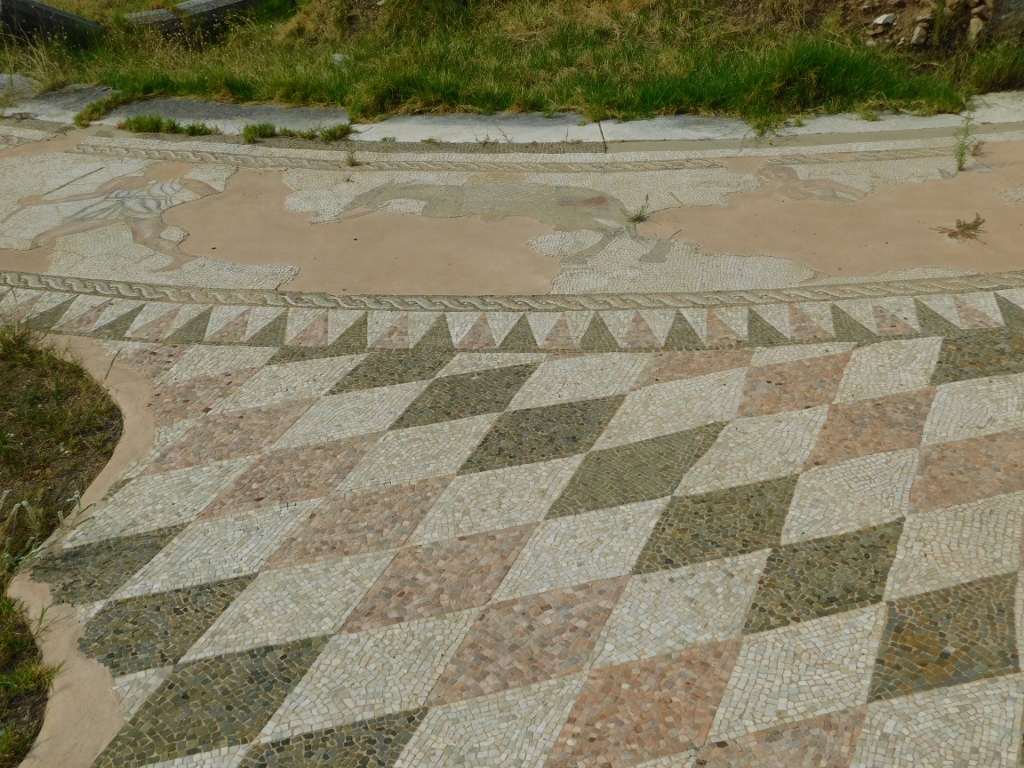 Temple of Aphrodite in Ancient Messene, a detail
Temple of Aphrodite in Ancient Messene, a detail
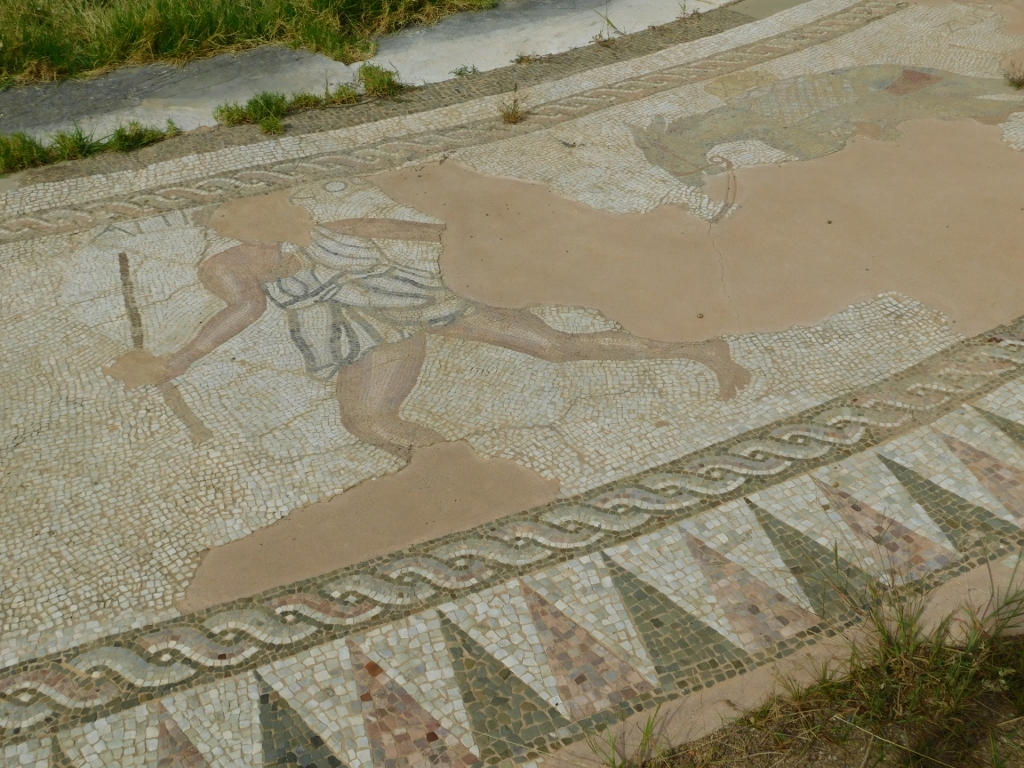 Temple of Aphrodite in Ancient Messene, a detail
Temple of Aphrodite in Ancient Messene, a detail
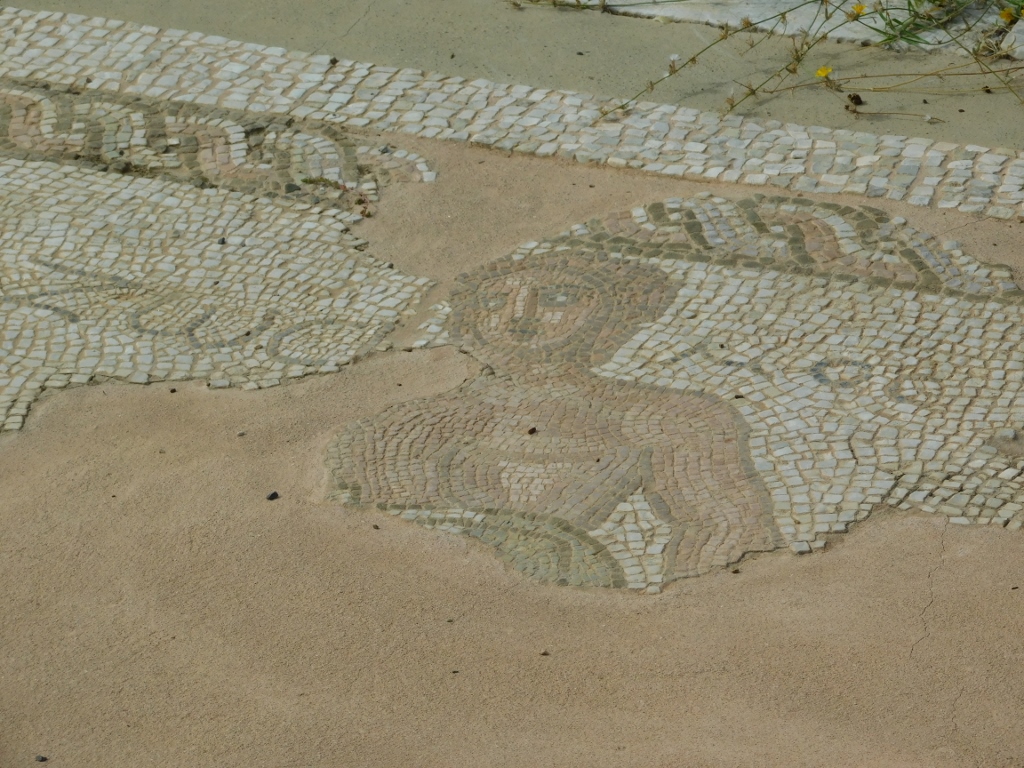 Temple of Aphrodite in Ancient Messene, a detail
Temple of Aphrodite in Ancient Messene, a detail
Next, I arrived at the southern parts of the Agora, which occupied an area of about 35,000 sq. m. Here, the first structure encountered is the Stoa of the Meat Market, built in the 3rd century BCE and renovated in the 1st century CE, functioning in that form until the end of the 4th century. Just to clarify, its remains are the Doric columns on the right side of the next photo, while the Meat Market is on the left.
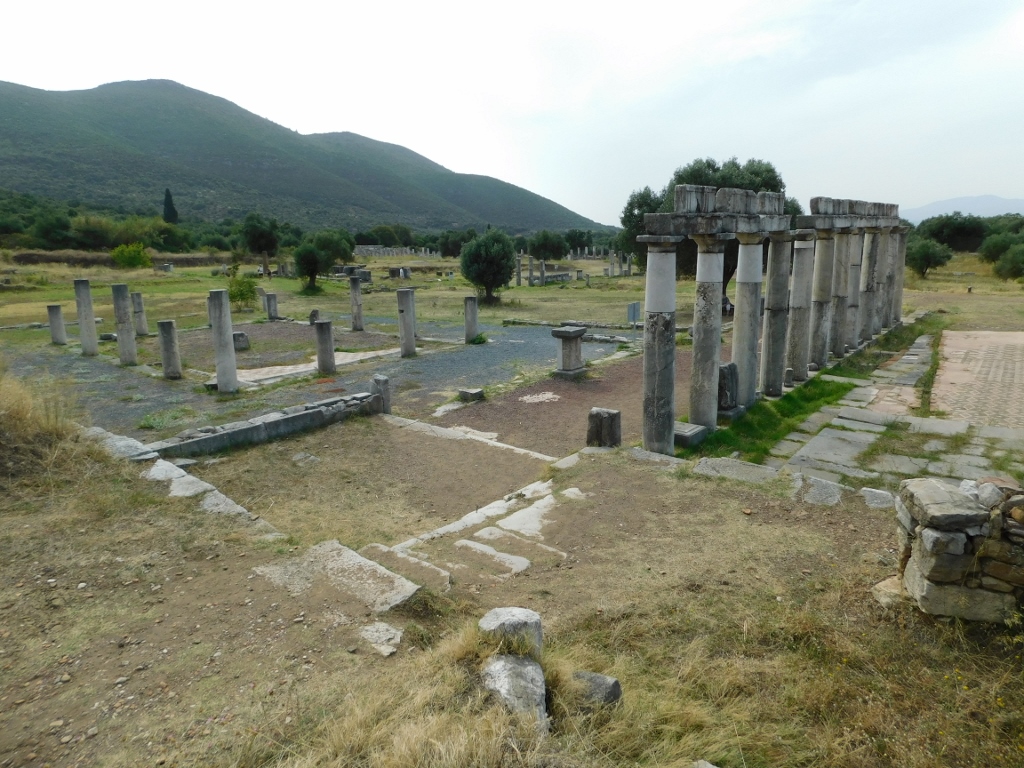 Stoa of the Meat Market
Stoa of the Meat Market
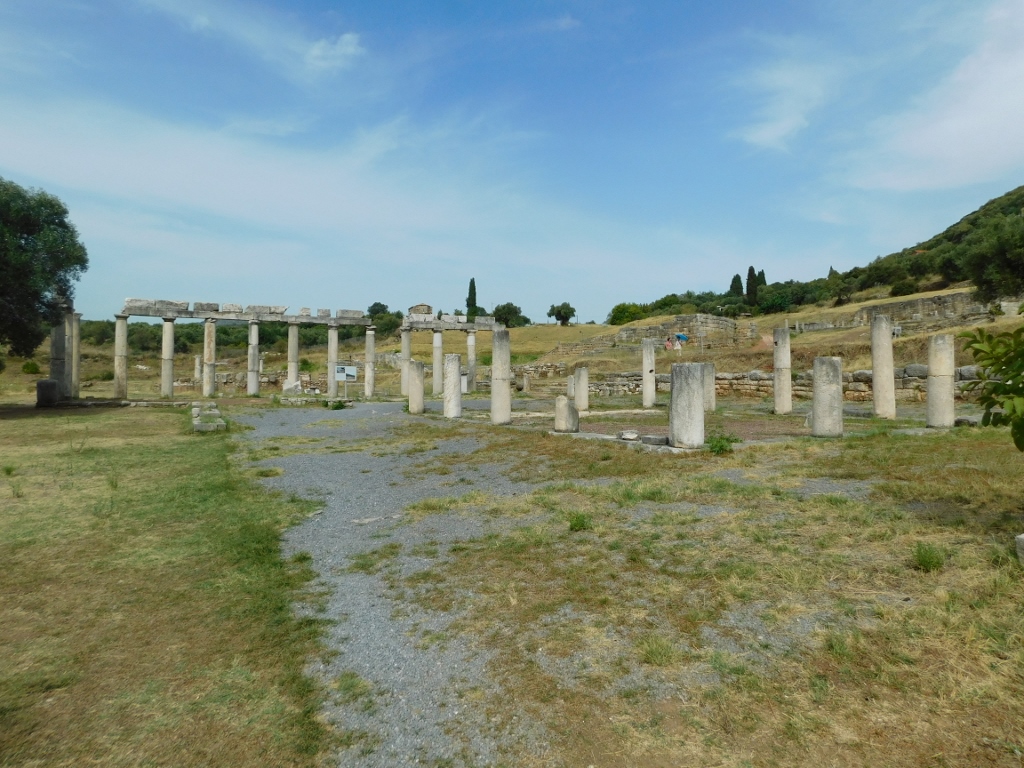 Stoa of the Meat Market
Stoa of the Meat Market
Within the Agora, there were various structures serving a wide range of purposes – from temples, such as the one dedicated to the deified Messenia, to subterranean facilities, buildings where officials met with their guests, council halls, etc.
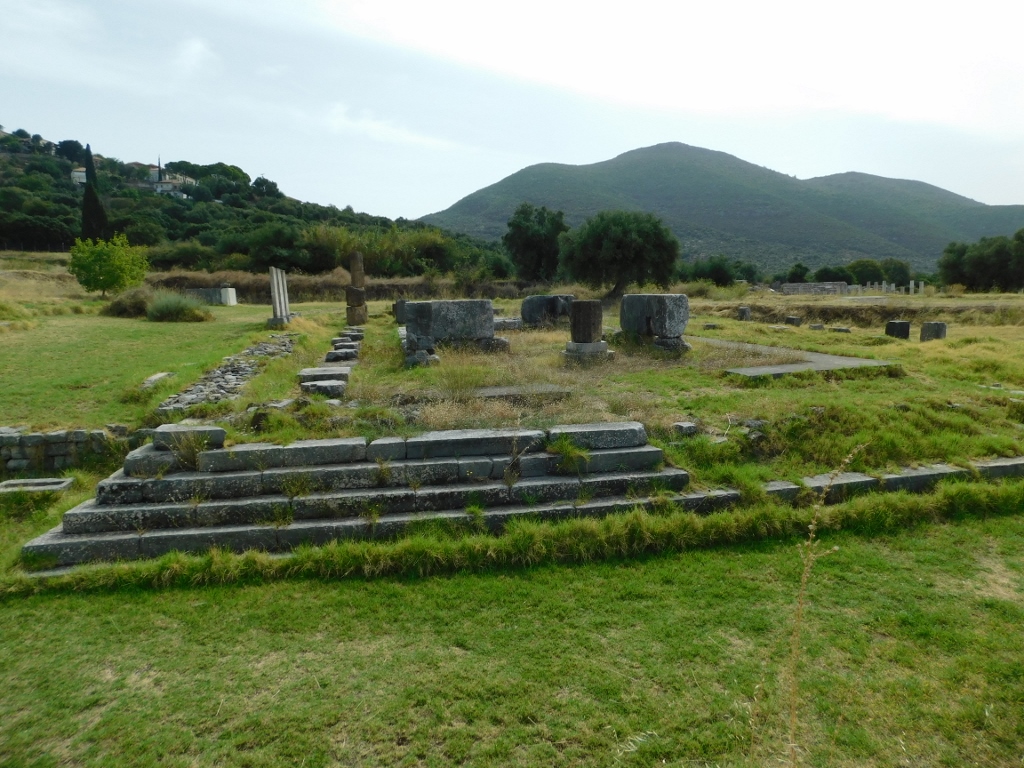 Agora in Ancient Messene, a detail
Agora in Ancient Messene, a detail
 Agora in Ancient Messene, a detail
Agora in Ancient Messene, a detail
 Agora in Ancient Messene, a detail
Agora in Ancient Messene, a detail
 Agora in Ancient Messene, a detail
Agora in Ancient Messene, a detail
Now, I walked along a wide path lined with a series of columns to the next important structure, the Asclepieion, or Sanctuary of Asclepius, dating back to the 3rd to 2nd century BCE.
 Archaeological site of Ancient Messene, a detail
Archaeological site of Ancient Messene, a detail
I have already mentioned previously that Messene got its name after the mythical queen believed in the region of Messenia to be the mother of Asclepius, the god of medicine. Therefore, it was more than fitting for this deity to have his sanctuary in the heart of the city.
 Asclepieion in Ancient Messene
Asclepieion in Ancient Messene
At the centre of the sanctuary stood a temple dedicated to Asclepius, along with an altar for sacrifices. Surrounding it were stoas that were parts of the buildings used for both sacral and secular purposes, all belonging to this complex.
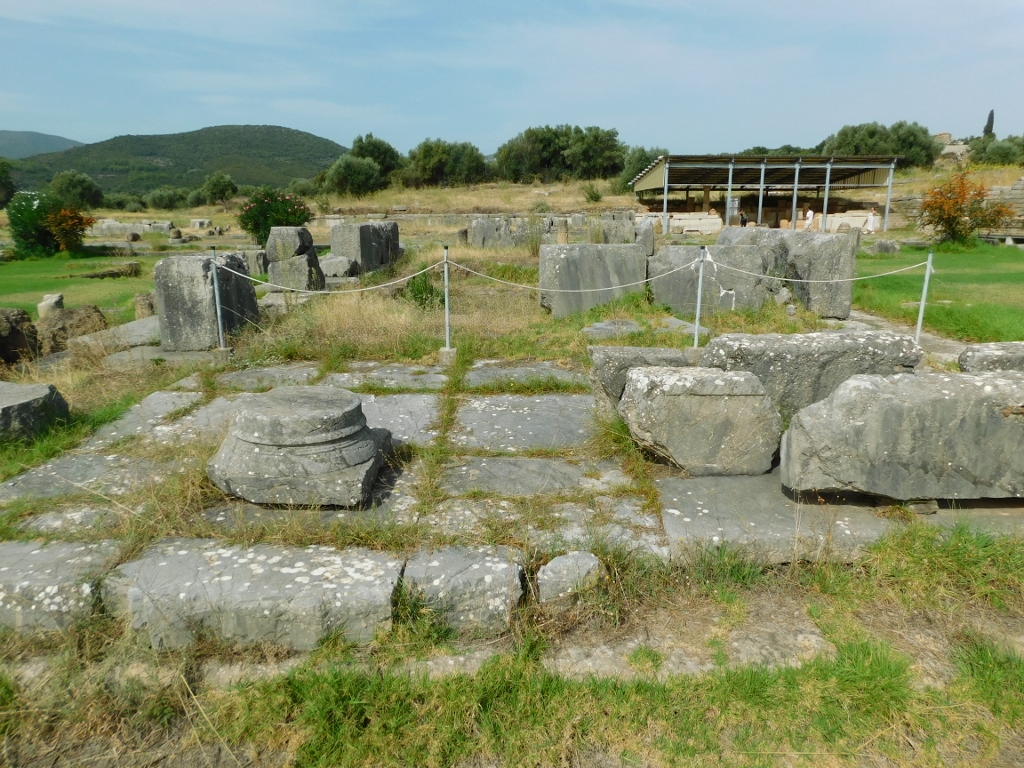 Asclepieion in Ancient Messene, a detail
Asclepieion in Ancient Messene, a detail
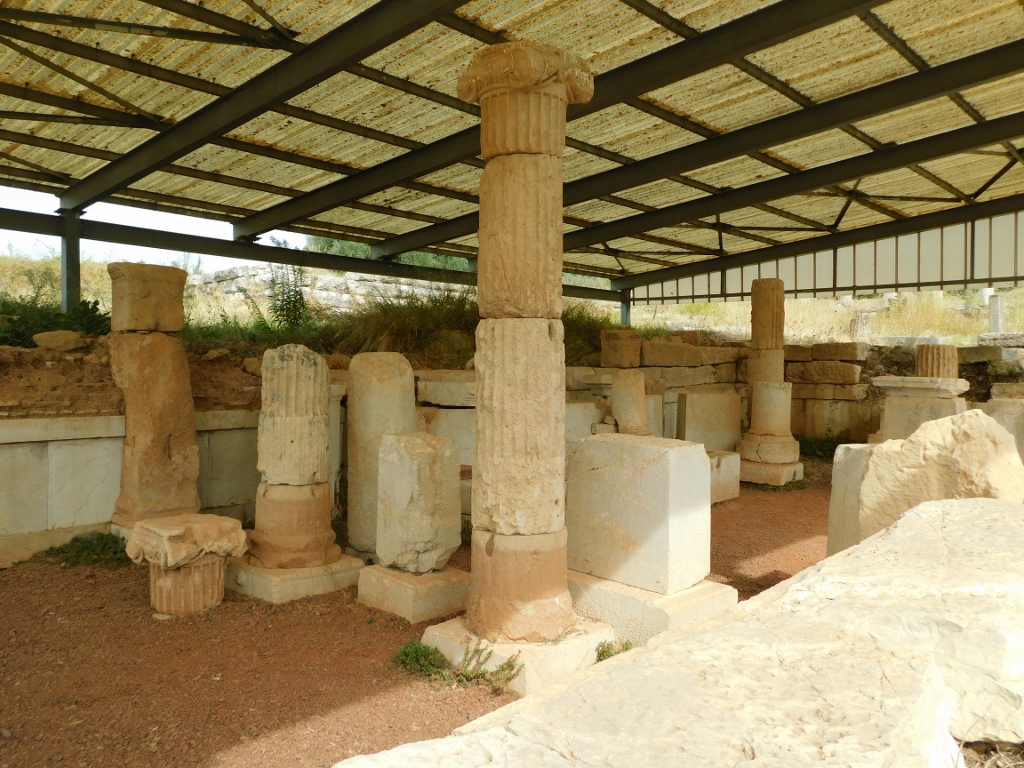 Asclepieion in Ancient Messene, a detail
Asclepieion in Ancient Messene, a detail
 Asclepieion in Ancient Messene
Asclepieion in Ancient Messene
Right next to the sanctuary dedicated to Asclepius is the Odeon – the gods, healing, politics and entertainment were never far apart in ancient Greece. The Odeon can already be seen to the right in the previous photo and here are some more pictures of it.
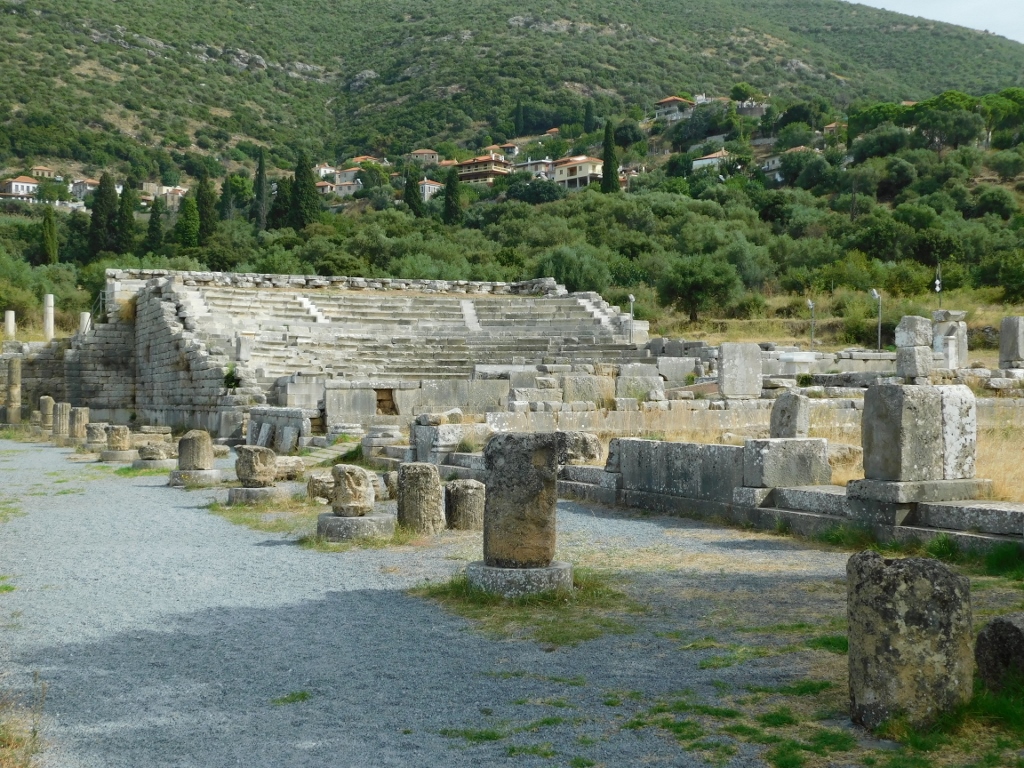 Odeon in Ancient Messene
Odeon in Ancient Messene
 Odeon in Ancient Messene
Odeon in Ancient Messene
The next structure was the Hierothysion, but first I took a moment to admire the rest of the site before slowly making my way down.
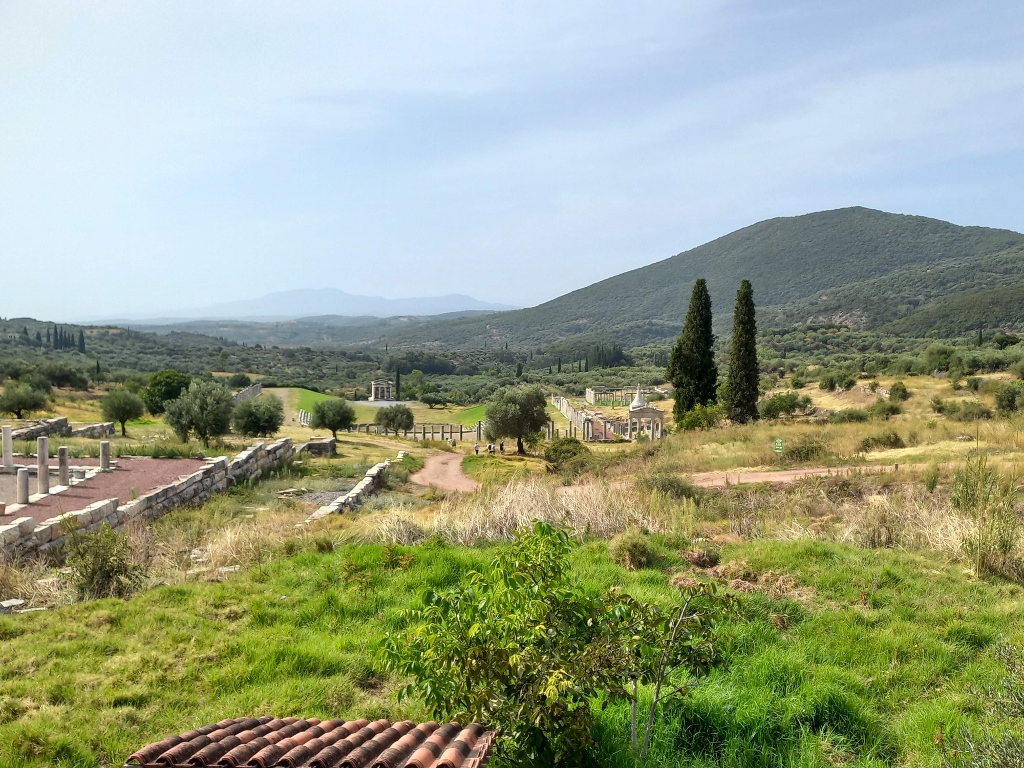 Archaeological site of Ancient Messene
Archaeological site of Ancient Messene
For visitors to this site, it's important to note that everything is laid out down a slope, so touring – or descending from the entrance – should only be problematic for few. However, the climbing back up can be challenging. Personally, I had no issues, but it's worth mentioning that transportation can be arranged on-site. The key is for everyone to enjoy their experience!
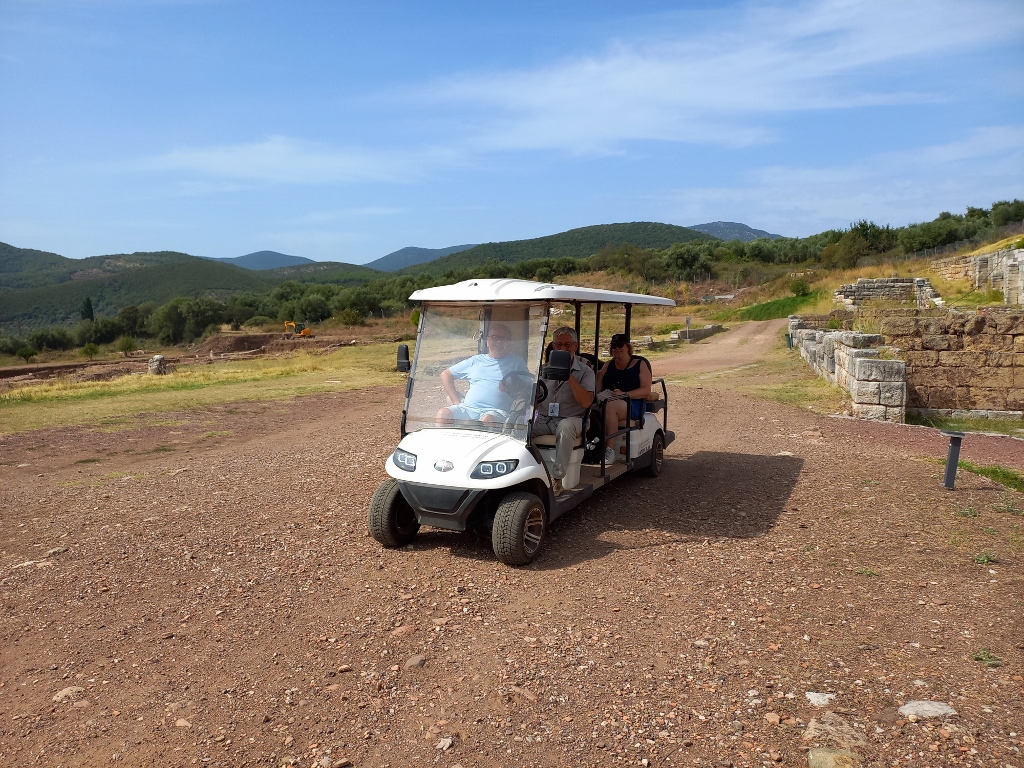 Transportation at the Archaeological site of Ancient Messene
Transportation at the Archaeological site of Ancient Messene
On the other hand, if one gets a bit out of breath, it’s not a problem – just stop and enjoy the exceptionally beautiful place and the remnants of the ancient city.
 Archaeological site of Ancient Messene
Archaeological site of Ancient Messene
As for the Hierothysion, it can be seen on the left side of the previous photograph. This was a political and sacral centre built in the 3rd century BCE and used until late antiquity. It housed statues of the 12 gods and served as a Pantheon where significant guests from other cities were formally received. This involved rituals, offerings and sacred meals for the gods, as well as sharing meat with pilgrims.
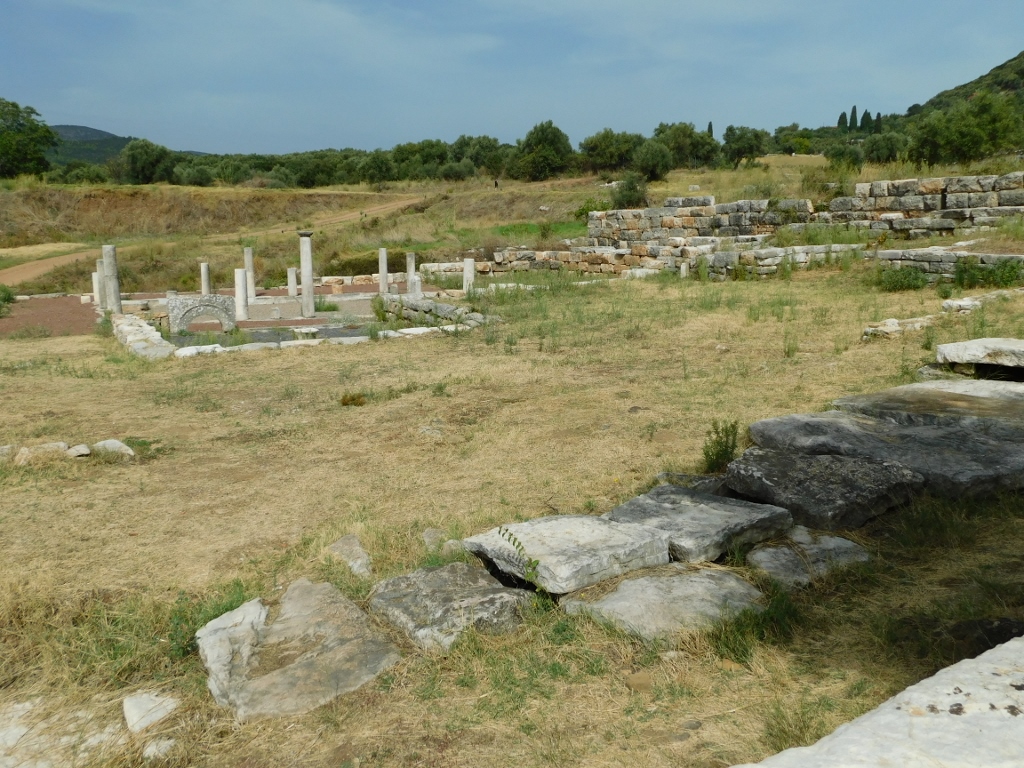 Hierothysion
Hierothysion
In front of me now was the final segment of the site, which I reached by walking through a meadow. I was extremely pleased to have come here.
 Archaeological site of Ancient Messene
Archaeological site of Ancient Messene
 Archaeological site of Ancient Messene
Archaeological site of Ancient Messene
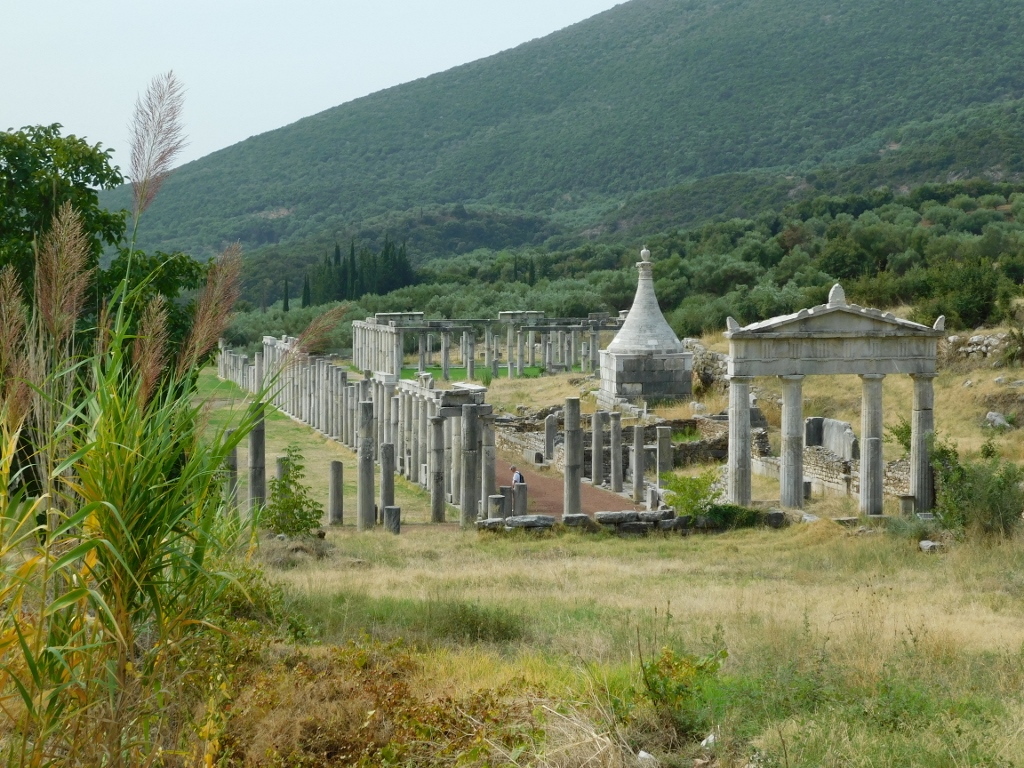 Archaeological site of Ancient Messene
Archaeological site of Ancient Messene
First, I went to the impressive Doric Propylon from the 1st century BCE that led to the Gymnasium. By the way, in ancient Greece, a gymnasium primarily referred to a sports institution – a place where men (only adult men) trained for games and competitions. Additionally, it was a place for socialising and engaging in intellectual activities.
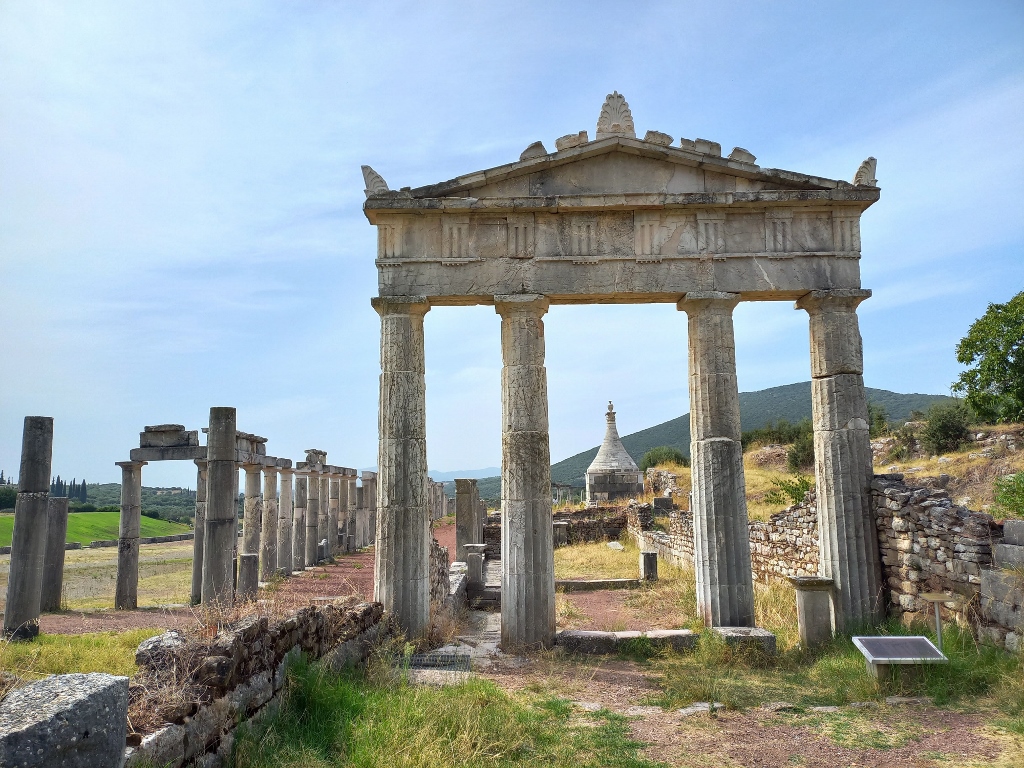 Doric Propylon
Doric Propylon
Here, I continued walking straight, capturing various details within the Gymnasium until I reached the Grave Monument located in this part of the site.
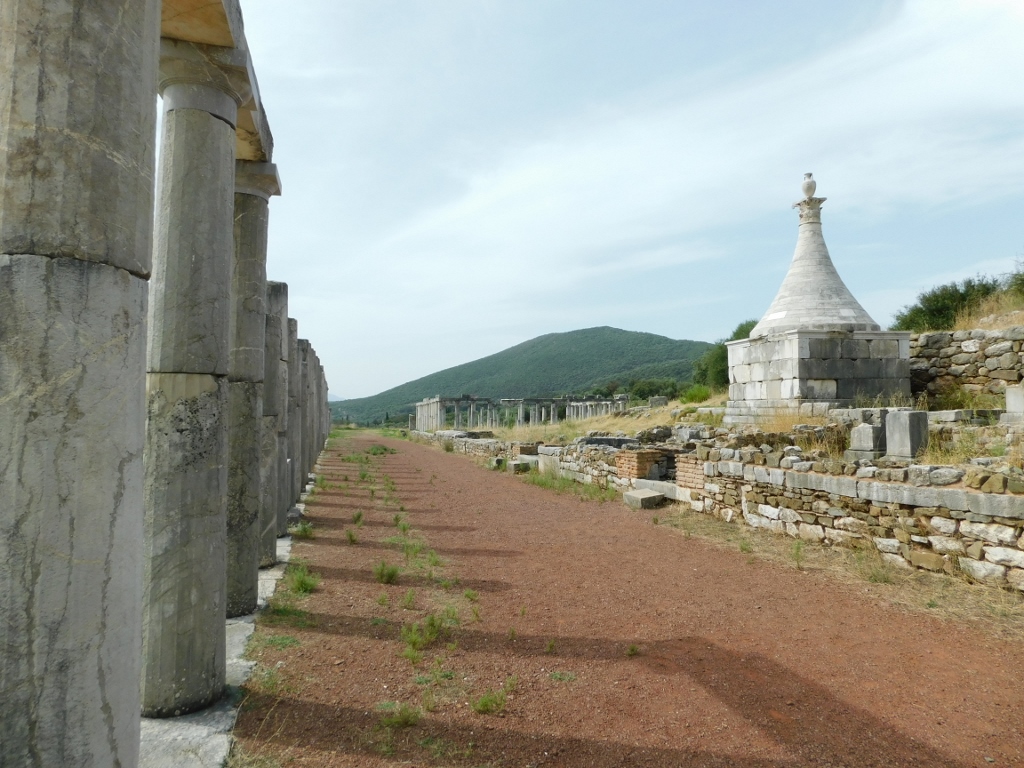 Archaeological site of Ancient Messene, a detail
Archaeological site of Ancient Messene, a detail
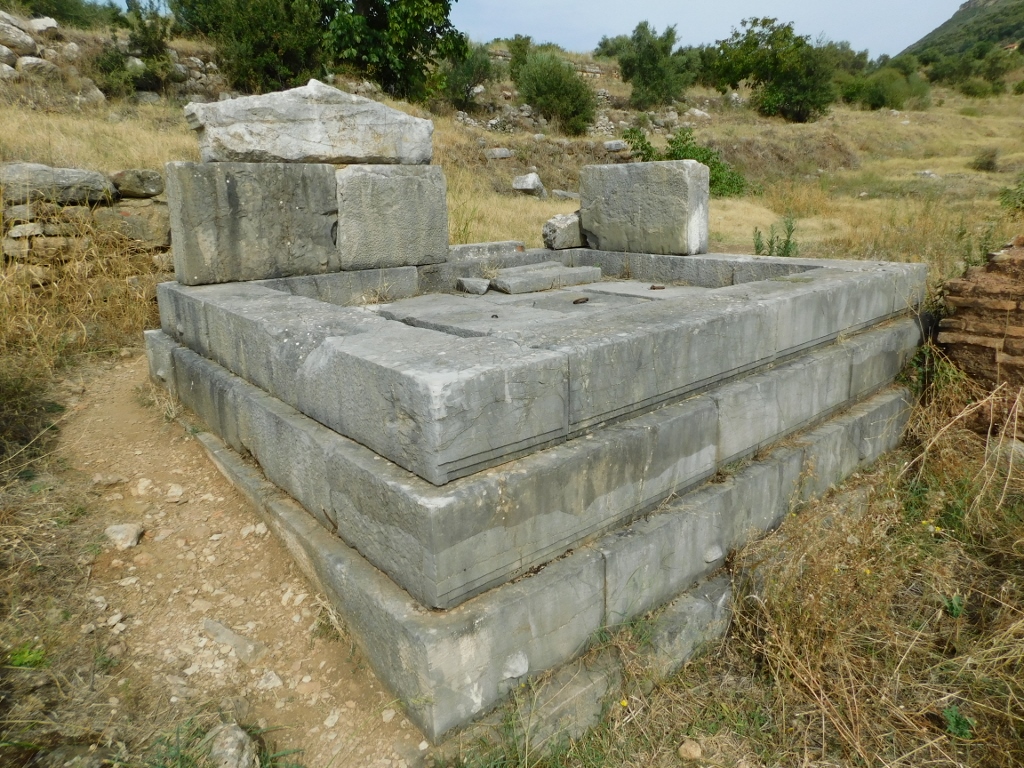 Archaeological site of Ancient Messene, a detail
Archaeological site of Ancient Messene, a detail
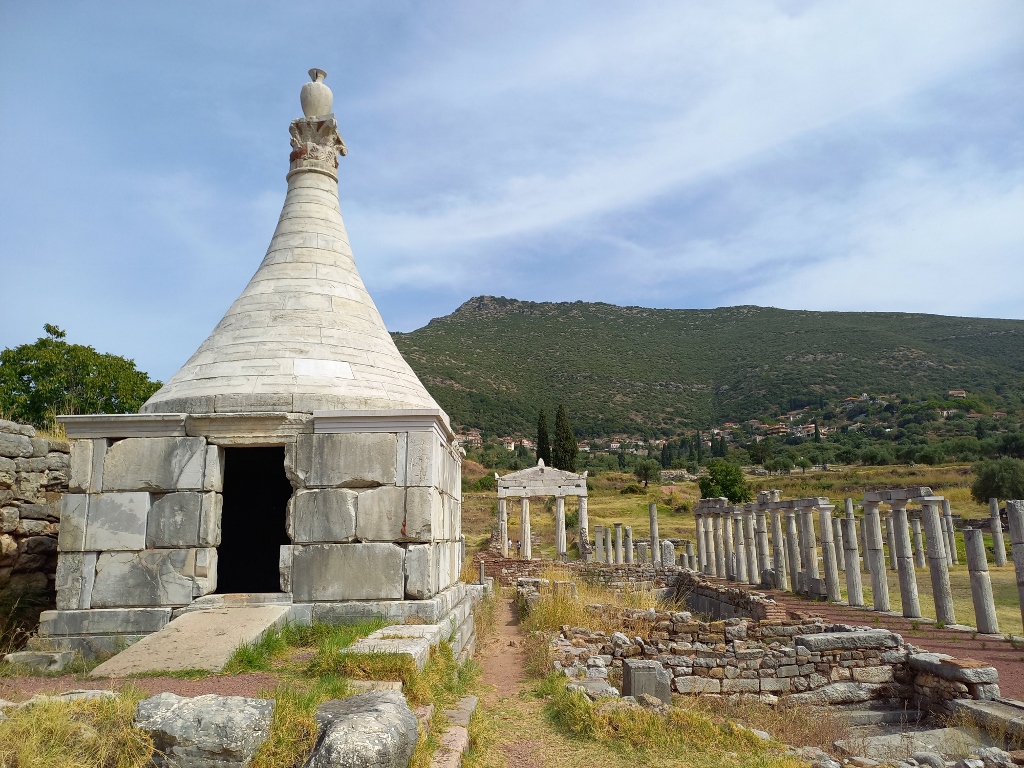 Grave Monument
Grave Monument
I must admit I couldn't find out what the grave monument was doing within the gymnasium. Nevertheless, the monument is exceptional. It was built in the 3rd century BCE for eight members of a Messenian aristocratic family and was used until the 1st century CE. Inside, there are eight burial places.
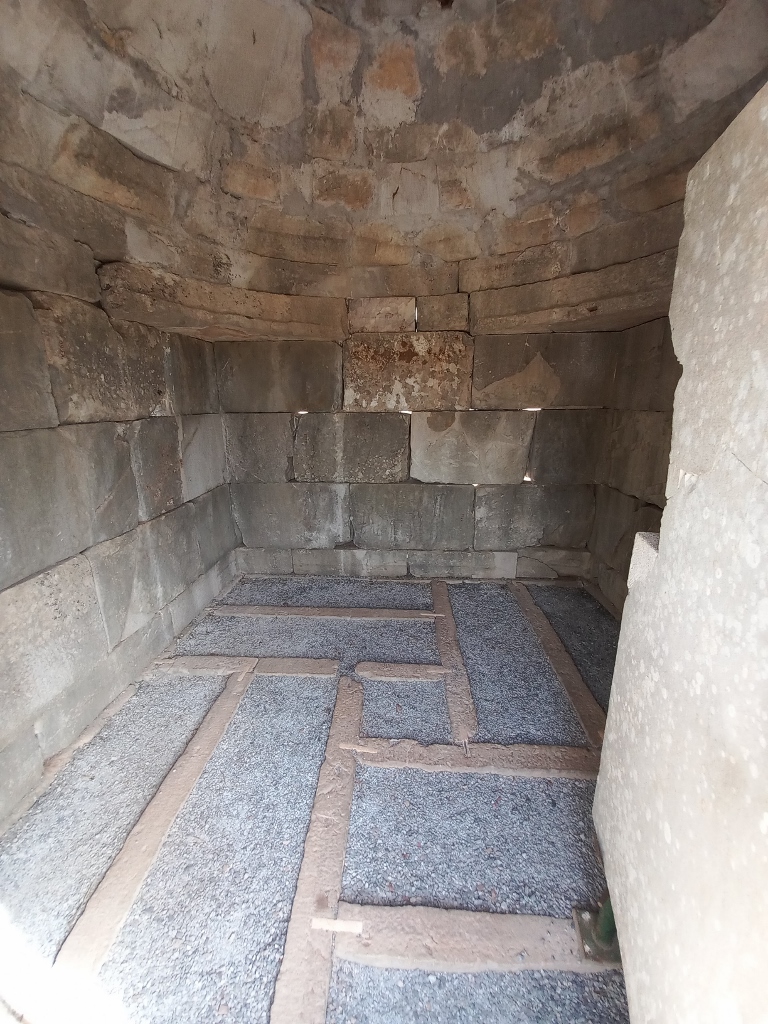 Grave Monument, a detail
Grave Monument, a detail
Some 50 m further are the remains of the Palaestra.
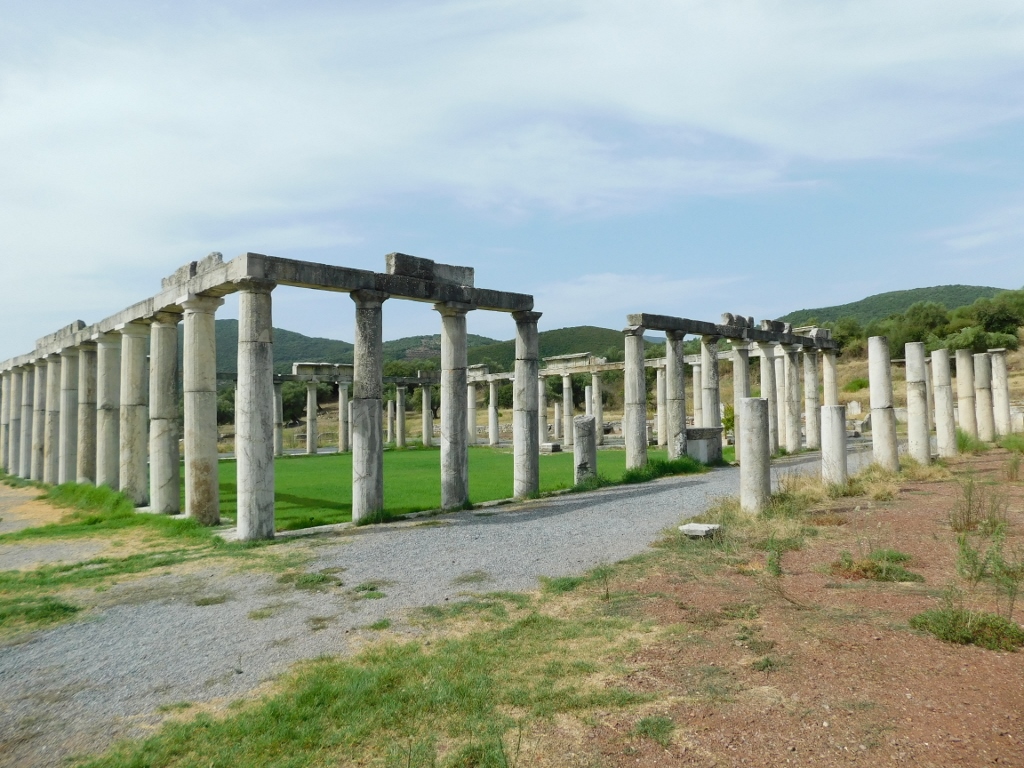 Palaestra
Palaestra
Palaestra is the name for wrestling schools, making this structure a logical extension of the gymnasium. It consists of a central courtyard surrounded by Doric stoas and auxiliary rooms. It was also built in the 3rd century BCE and was in use until the 4th century CE.
Within the Palaestra, there were 22 water basins, with the remains of one of them visible in the next photo.
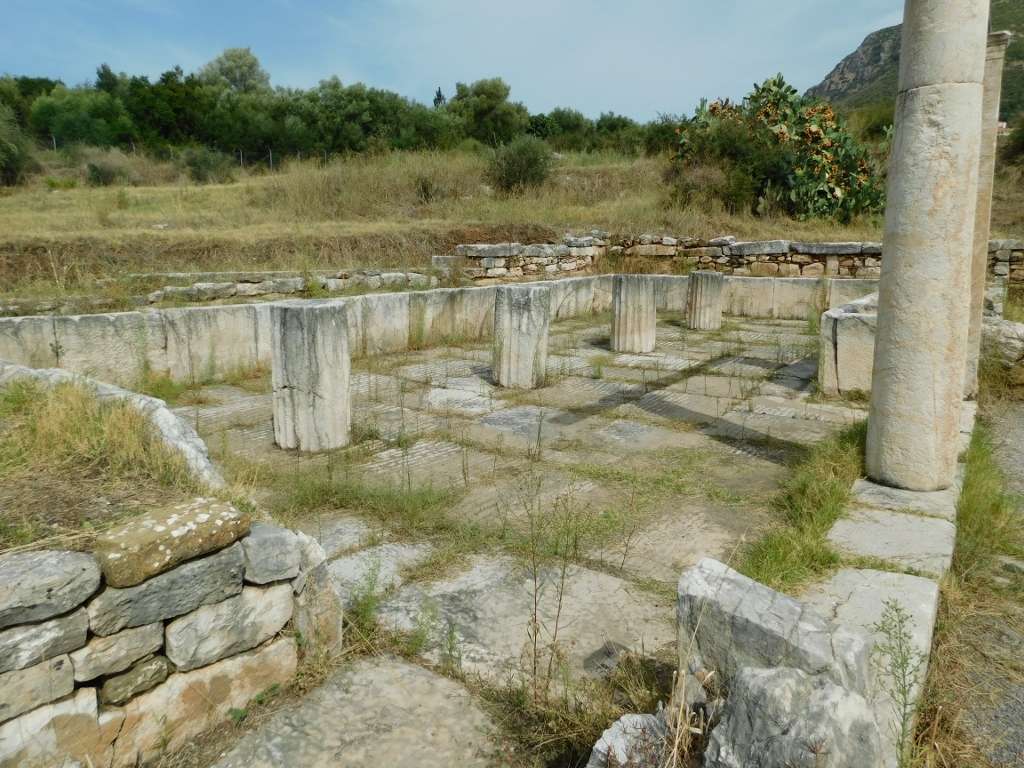 Palaestra, a detail
Palaestra, a detail
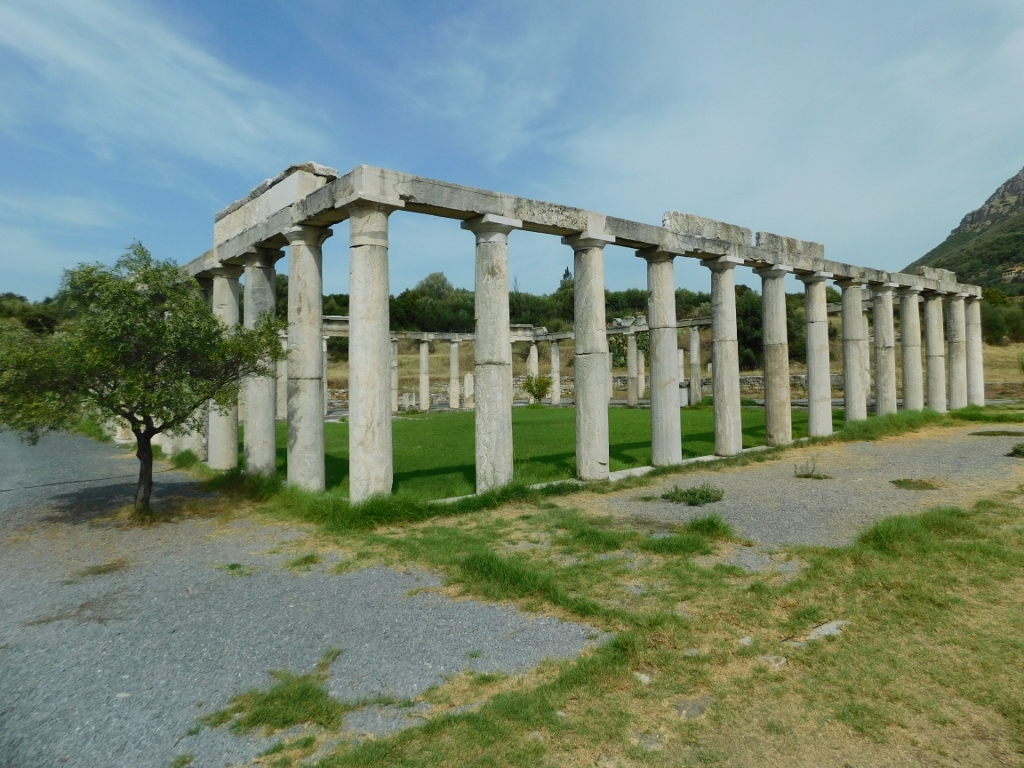 Palaestra
Palaestra
Before continuing my tour of the site, I glanced back along the path I had taken to reach the Palaestra.
 Archaeological site of Ancient Messene
Archaeological site of Ancient Messene
This path leads alongside the stadium. It must have been convenient for athletes to descend here after training in the Gymnasium and Palaestra to showcase their skills.
 Stadium in Ancient Messene
Stadium in Ancient Messene
At the end of the long, narrow horseshoe-shaped area, where the stadium is located, you reach a spacious clearing. The view of the entire site is outstanding.
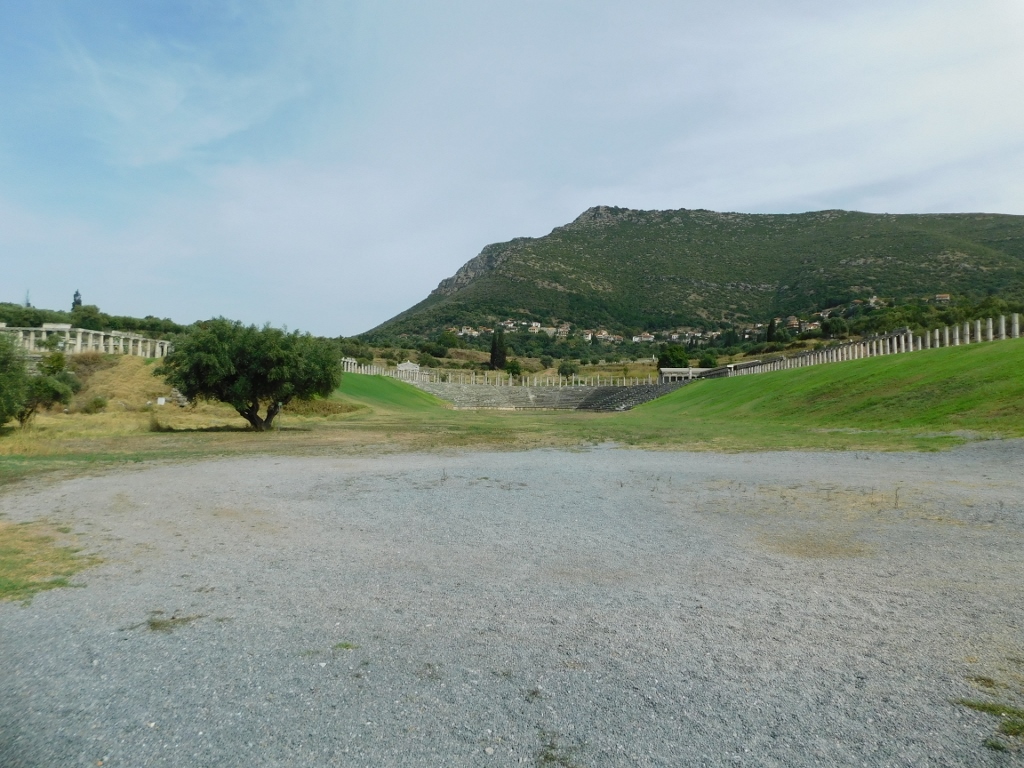 Archaeological site of Ancient Messene
Archaeological site of Ancient Messene
Here is the last monument in the series, the reconstructed Mausoleum of the Saithidae Family. The monument is also often referred to as the Heroon.
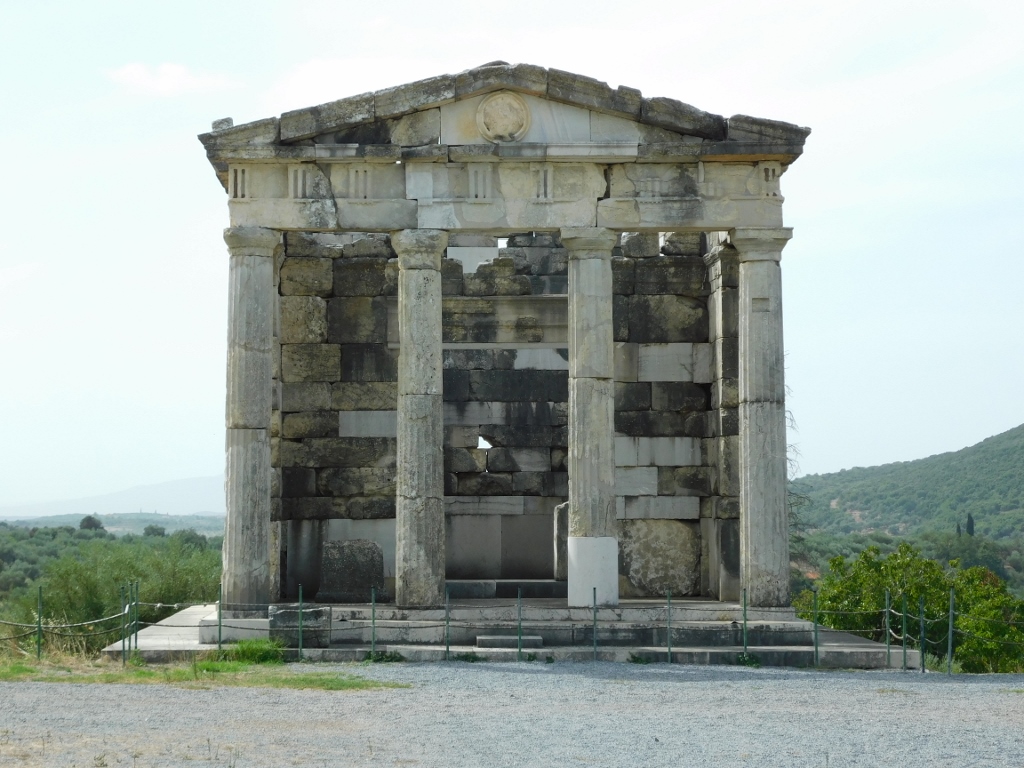 Mausoleum of the Saithidae Family
Mausoleum of the Saithidae Family
This small structure (7.44 x 11.60 m) was built in the style of a Doric temple and it served as a burial place for the members of the Saithidae family from the 1st century BCE to the 4th century CE. Members of this family held prominent positions during the Roman rule, either as high priests or governors. The mausoleum clearly reflects the political, economic, social and spiritual significance of the city.
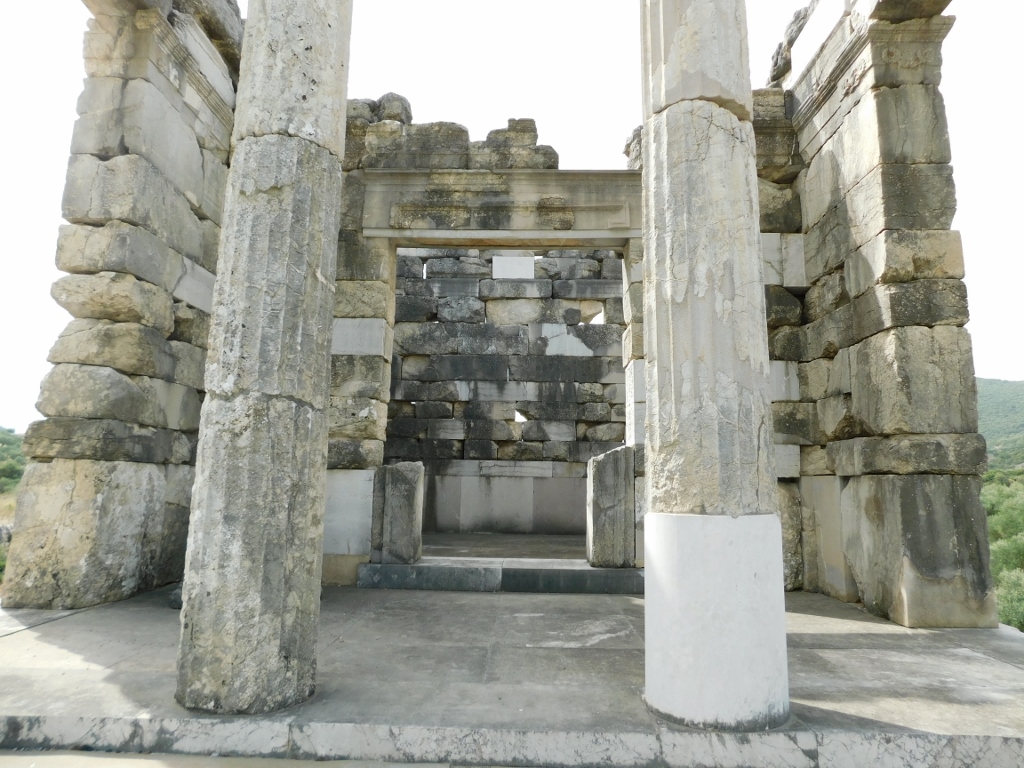 Mausoleum of the Saithidae Family, a detail
Mausoleum of the Saithidae Family, a detail
 Mausoleum of the Saithidae Family, a detail
Mausoleum of the Saithidae Family, a detail
 Mausoleum of the Saithidae Family
Mausoleum of the Saithidae Family
What is perhaps most striking about this mausoleum is its remarkable location within the site.
 Mausoleum of the Saithidae Family
Mausoleum of the Saithidae Family
Now I was practically heading back to the exit. Upon returning home, I realised that I had missed the luxurious Roman villa with mosaic floors, but there was nothing to be done about it. Instead, I enjoyed capturing the surroundings of the stadium and the site.
 Archaeological site of Ancient Messene
Archaeological site of Ancient Messene
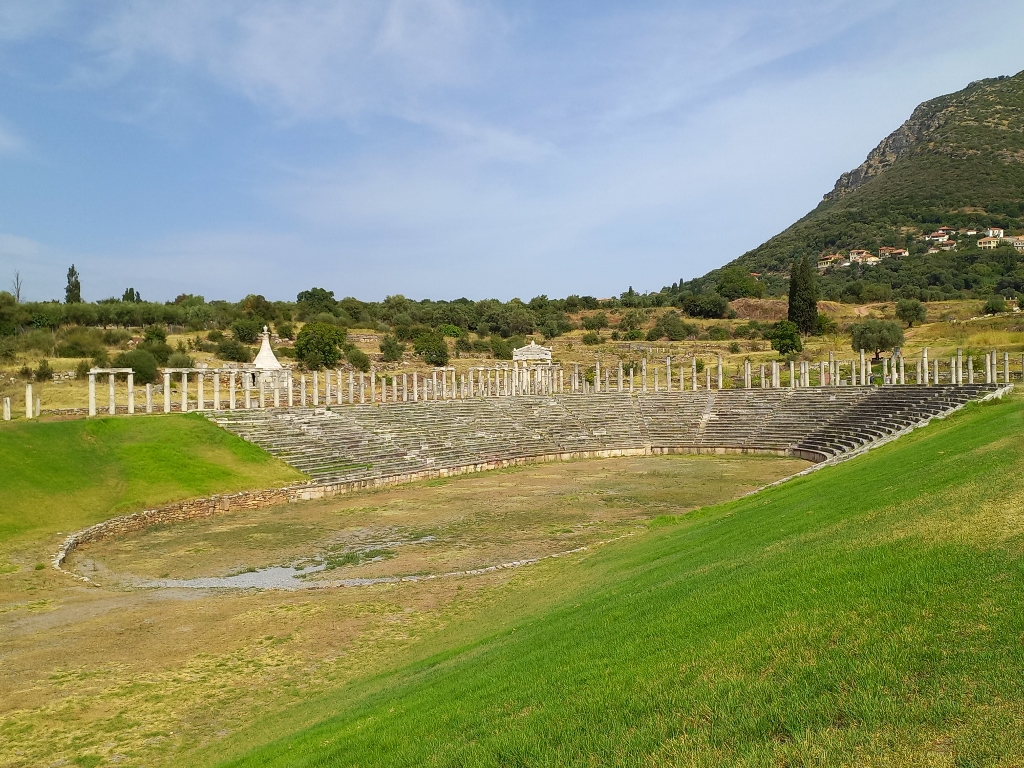 Stadium in Ancient Messene
Stadium in Ancient Messene
 Archaeological site of Ancient Messene
Archaeological site of Ancient Messene
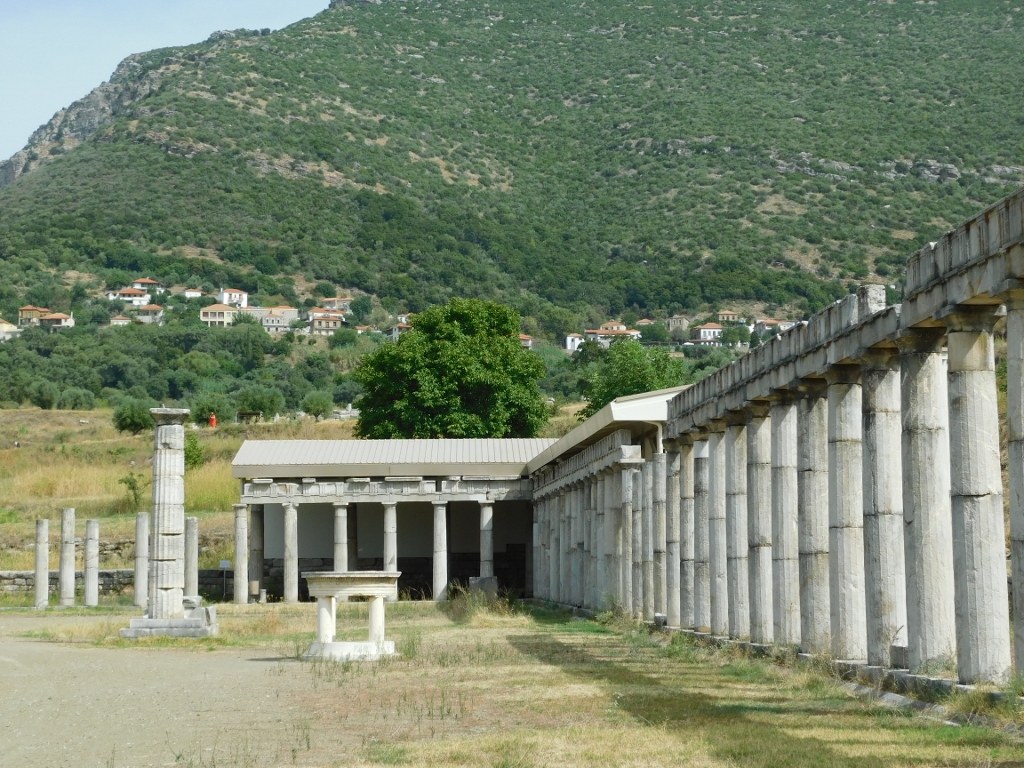 Archaeological site of Ancient Messene, a detail
Archaeological site of Ancient Messene, a detail
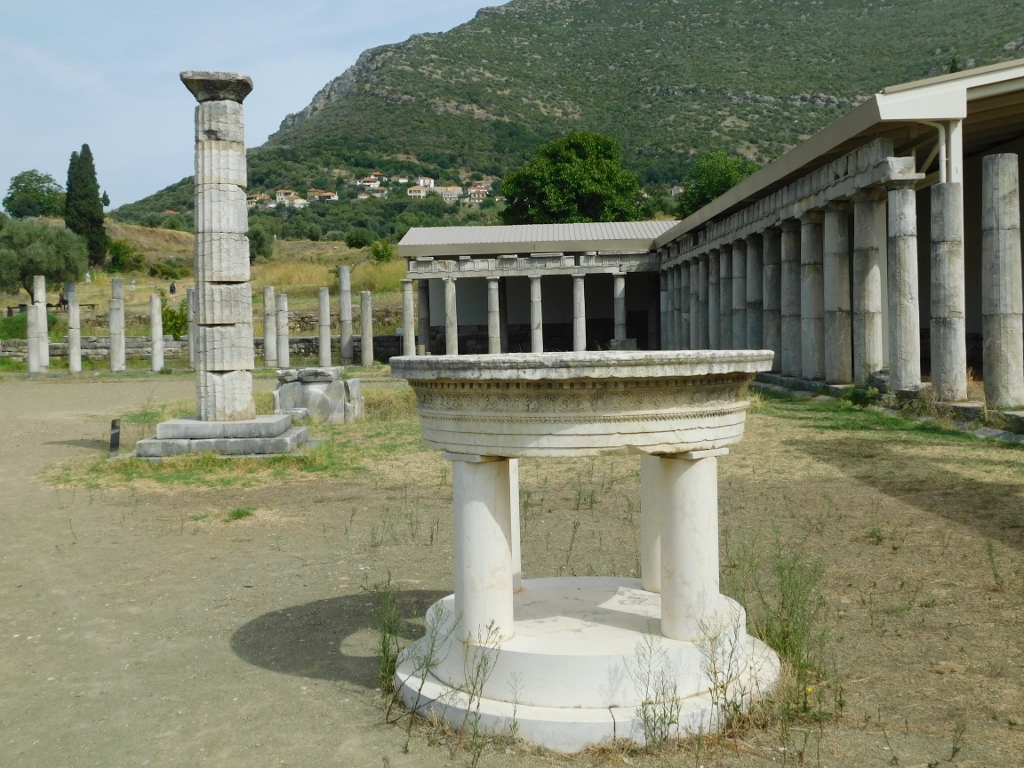 Archaeological site of Ancient Messene, a detail
Archaeological site of Ancient Messene, a detail
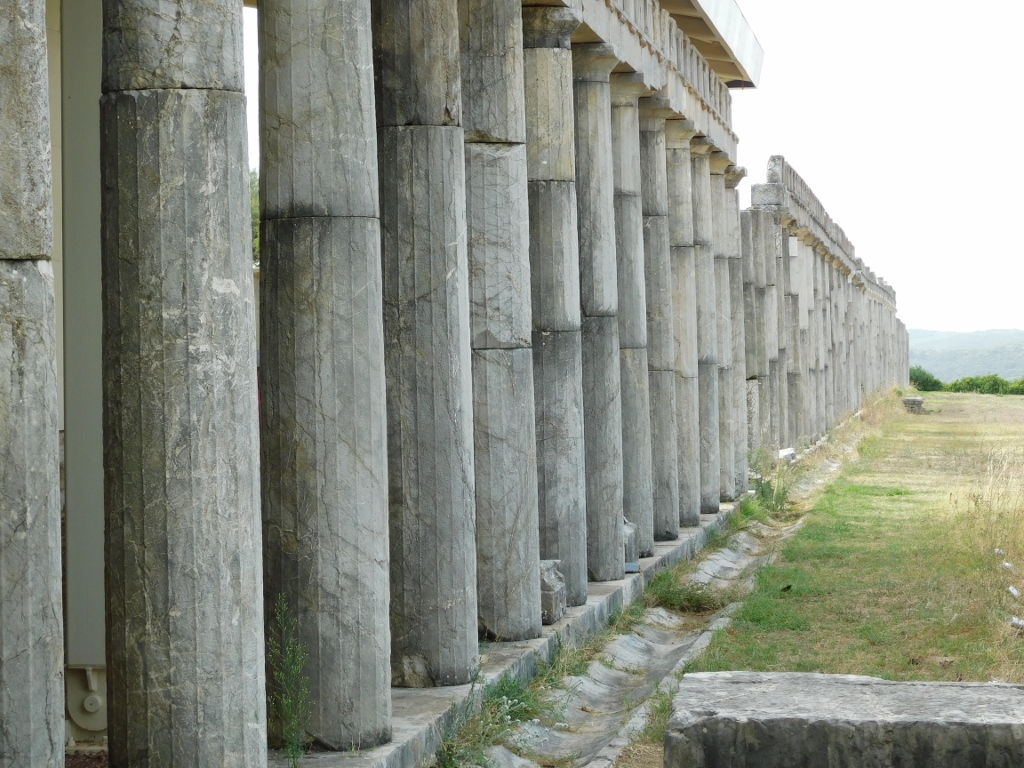 Archaeological site of Ancient Messene, a detail
Archaeological site of Ancient Messene, a detail
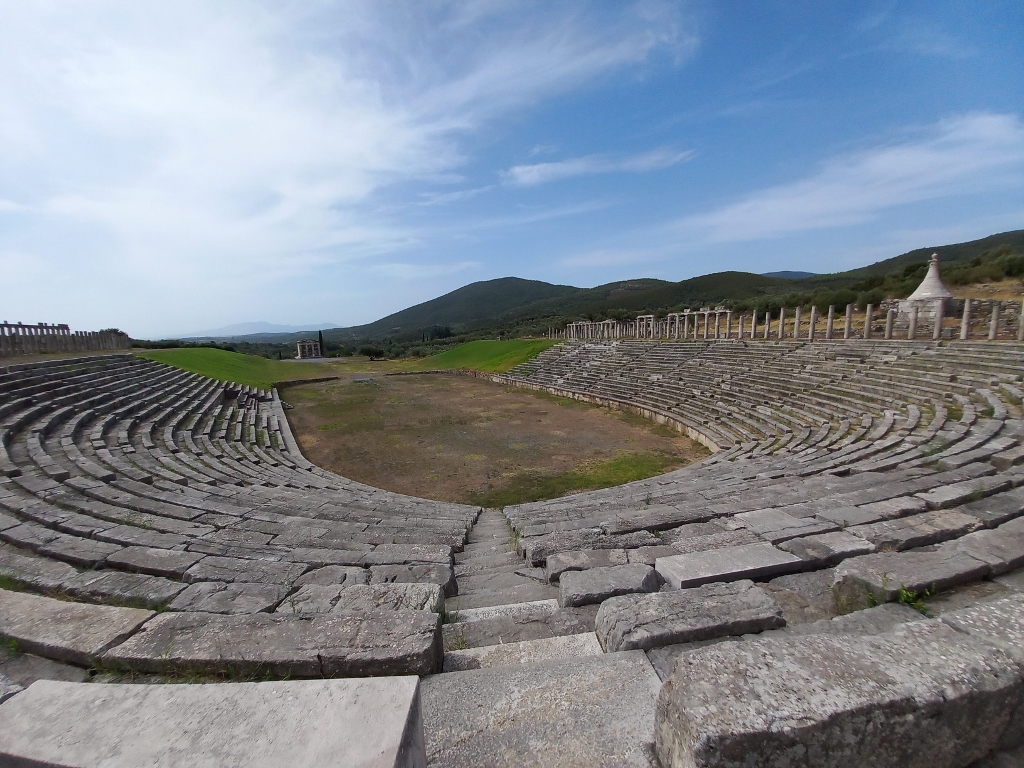 Stadium in Ancient Messene
Stadium in Ancient Messene
In the direct proximity to the site, there is also the Archaeological Museum of Ancient Messene. Although I believe the museum is excellent, I didn't have the time to linger, since I had about four hours of driving ahead of me and a couple of planned stops, while it was already past noon.
So, I first drove to the town of Pilos on the western coast of Peloponnese, at the third "finger," i.e., the westernmost peninsula in the southern Peloponnese.
Here’s a map that will help with orientation and finding the exact location of Pilos.
When I was close to the town, I stopped at a parking area in order to enjoy the fantastic view of Navarino Bay.
 Navarino Bay
Navarino Bay
The magnificent, spacious Navarino Bay resembles a lagoon, with a narrow opening only in the south and another much narrower one in the northwest. It is surrounded by land on all other sides. To the west, this is in the form of a long, narrow island, Sfaktiria. Overall, it’s quite a beautiful place.
To the south, right next to the opening, there is the town of Pilos, but for now, I only photographed it from above, intending to return later and explore it a bit.
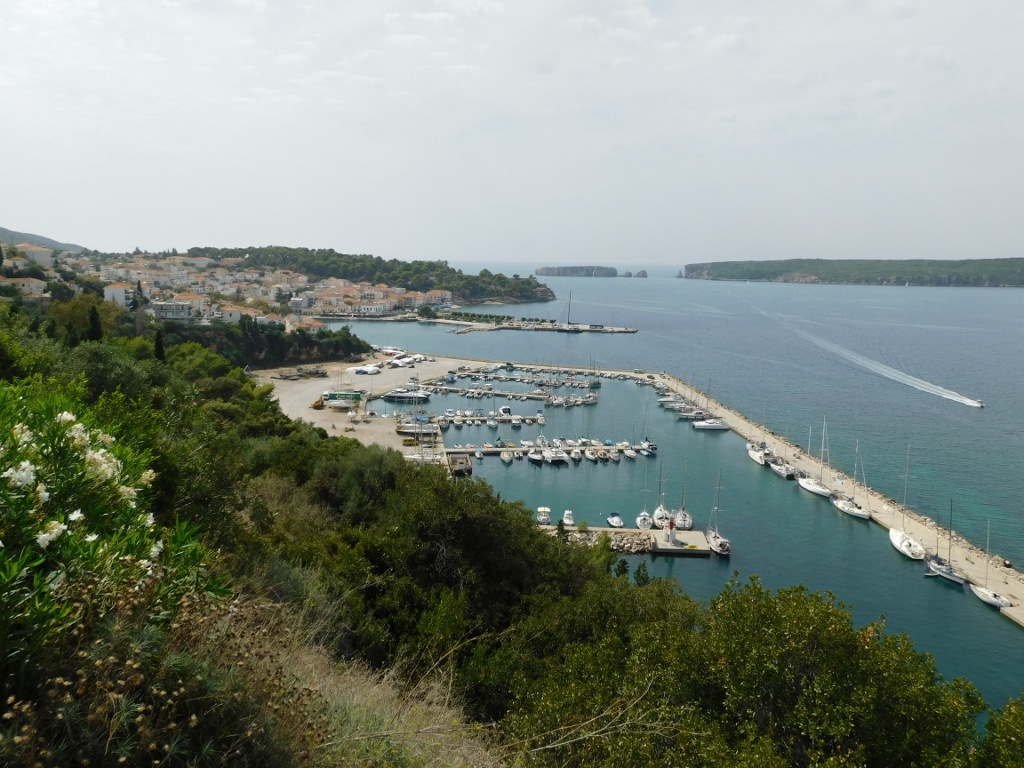 Pilos
Pilos
In the previous picture, Pilos is visible along with the southern part of Sfaktiría Island, including the rocky extension of the island.
 Pilos, a detail
Pilos, a detail
So, after passing through the town, I continued 11 km further south to the village of Methoni.
The main road shoots straight through the centre of this village in the south-western Peloponnese, ending at the beginning of a small peninsula that has been entirely transformed into a fortress.
 Methoni Citadel
Methoni Citadel
The citadel is separated from the rest of the mainland by a dry moat and to enter, one must cross an impressive stone bridge.
 Methoni Citadel, a detail
Methoni Citadel, a detail
Although people had lived here since prehistoric times, due to its remarkable strategic position (Methoni practically served as a watchtower for the eastern Mediterranean), starting from the Middle Ages, various foreign conquerors took turns occupying it. The Byzantines were the first, followed by the Venetians, who, with a brief pause in the second half of the 14th century, remained for nearly three centuries. In 1500, the Ottomans arrived, although the Venetians briefly retook the citadel in the late 17th century. However, in 1715, the Turks returned and stayed until the 19th century. Since 1828, Methoni has been a part of Greece.
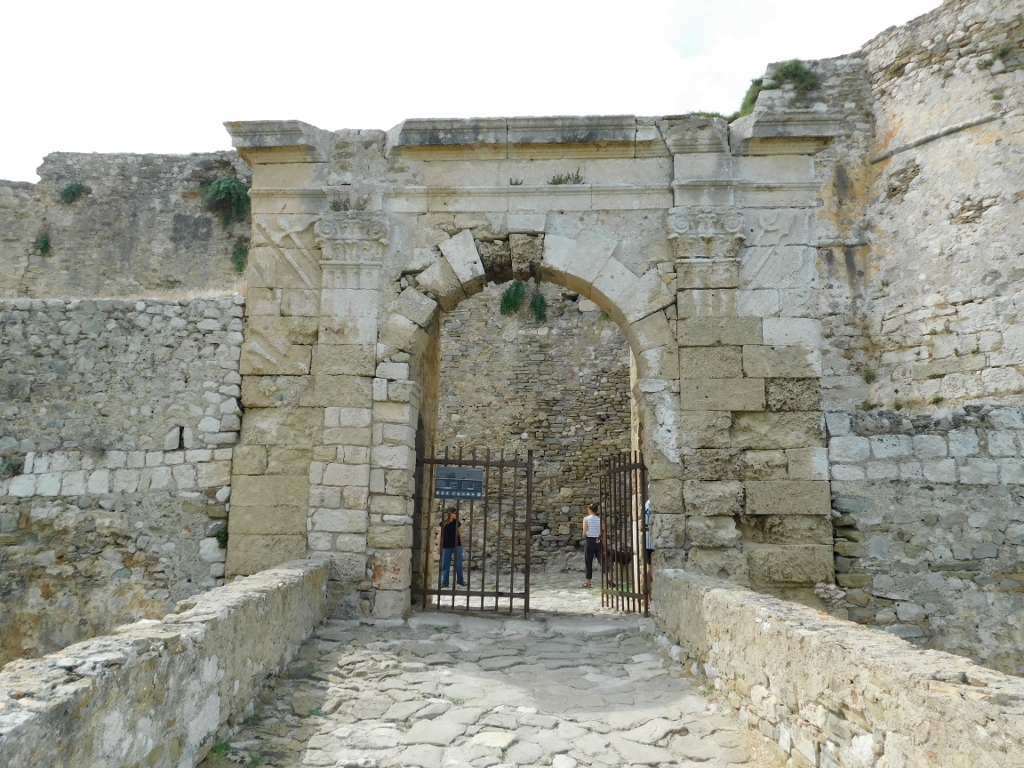 Methoni Citadel, a detail
Methoni Citadel, a detail
The construction of the citadel began in the 13th century on the site of an earlier fortress. The development of the fortification continued until the 18th century. However, the majority of the structure was built during the Venetian rule, as evidenced by the presence of the lions of St. Mark, which can be seen on the fortifications. Today, 15 relief representations of the symbol of the Venetian Republic are visible on the walls of the citadel in Methoni.
 Methoni Citadel, a detail
Methoni Citadel, a detail
Those truly interested in fortifications can enjoy exploring here, but even for someone with a casual interest like me, walking around the citadel was a pleasant experience.
To start with, you pass between the walls. Visitors can climb to the top of the fortifications, but I preferred to stay on the ground. It was a hot day and I hadn't drunk enough water, so dehydration made me a bit tired. Nevertheless, I wanted to explore the fortress first and then go for a refreshment drink.
 Methoni Citadel, a detail
Methoni Citadel, a detail
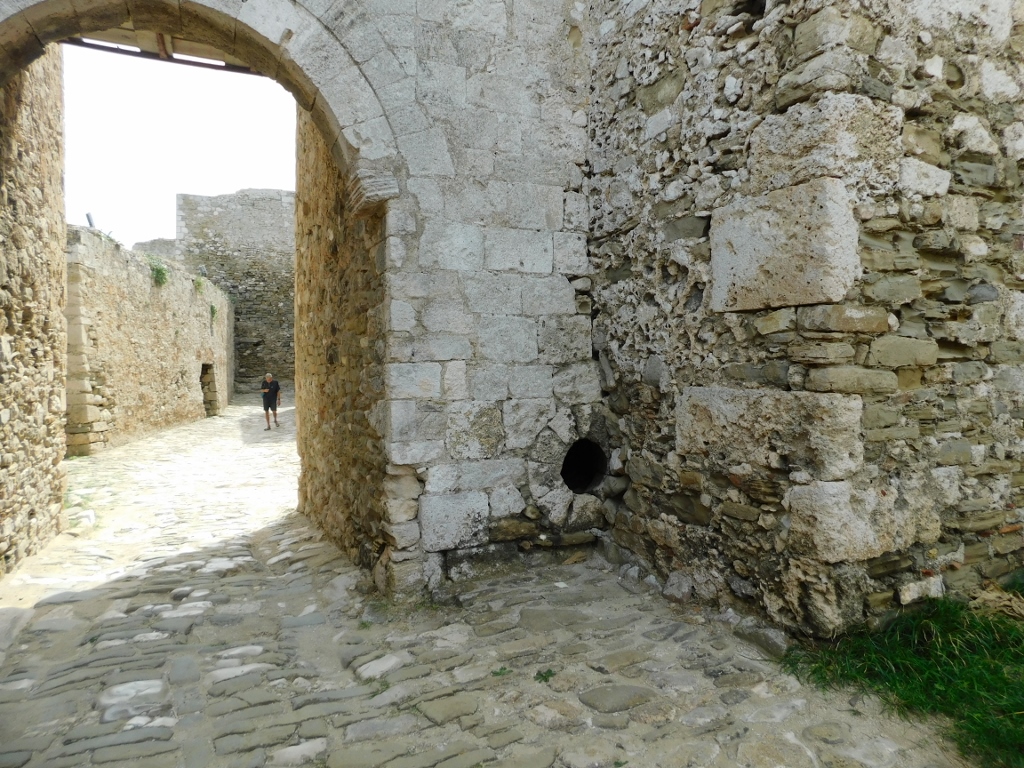 Methoni Citadel, a detail
Methoni Citadel, a detail
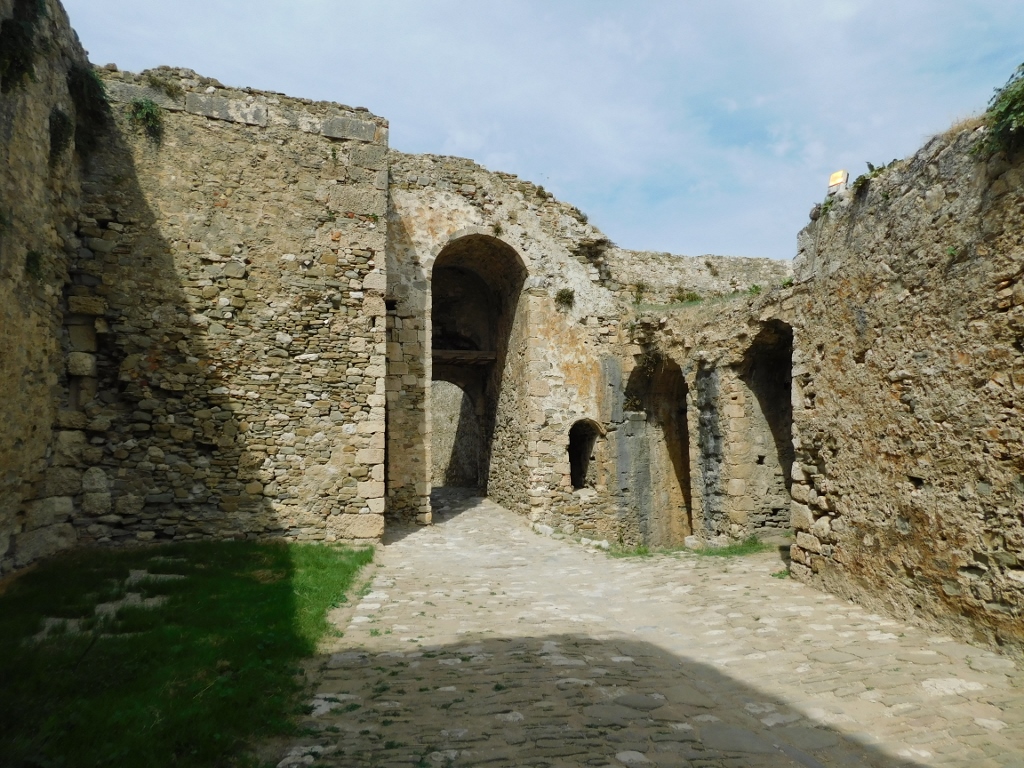 Methoni Citadel, a detail
Methoni Citadel, a detail
At one point, you leave the walls and enter the central area where an entire town once existed.
 Methoni Citadel, a detail
Methoni Citadel, a detail
I will continue the story about the Methoni Citadel in the next sequel of the travel story about my journey through the Peloponnese in September 2023.